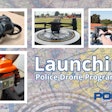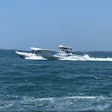In a decision swayed substantially by in-car video, the U.S. Supreme Court ruled Monday that police cannot be sued by suspects injured as a result of a high-speed chase in which they are involved.
The court ruled in favor of Dep. Timothy Scott of the Coweta County Sheriff’s Office. The officer had rammed then 19-year old Victor Harris’ car, knocking his vehicle off the road to end a car chase that, at times, exceeded 100 mph. Harris was paralyzed as a result of the accident.
The Court based its decision in large part on the substantiating evidence provided by the officer’s in-car video. The chase careened over two counties, with video recording Harris accelerating several times over 100 mph and passing more than 30 cars, often in no-passing zones.
Justice Antonin Scalia wrote the 8-1 majority opinion overturning a lower court ruling. “Far from being the cautious and controlled driver the lower court depicts, what we see on the video more closely resembles a Hollywood-style car chase of the most frightening sort, placing police officers and innocent bystanders alike at greater risk of serious injury."
Jim Sanner, CEO of Decatur, called the case an important validation of the value of video for law enforcement. “This kind of victory is why Decatur entered the video arena in the first place,” he said. “Video evidence has time and again proven officers make the right choices. It is used to corroborate their actions, defend their behavior, and to justify their arrests with evidentiary documentation. As one of the leading manufacturers of digital video for police, we are glad the Court supported this law enforcement tool.”
















